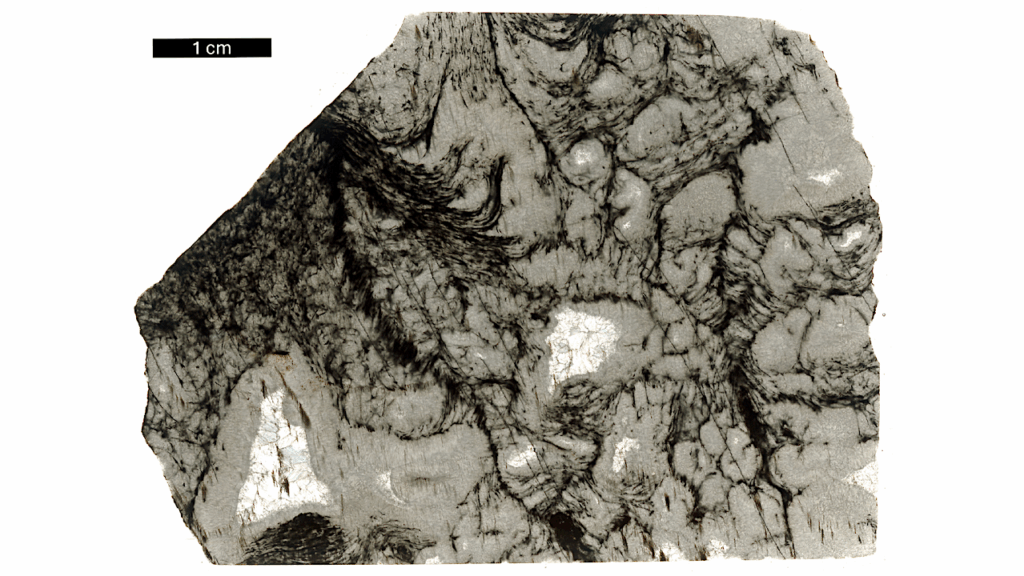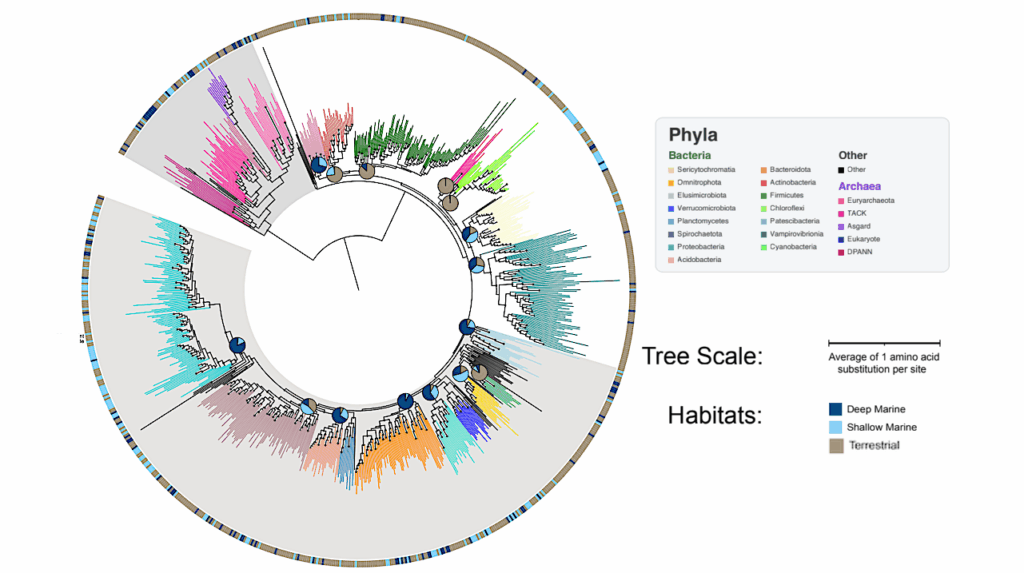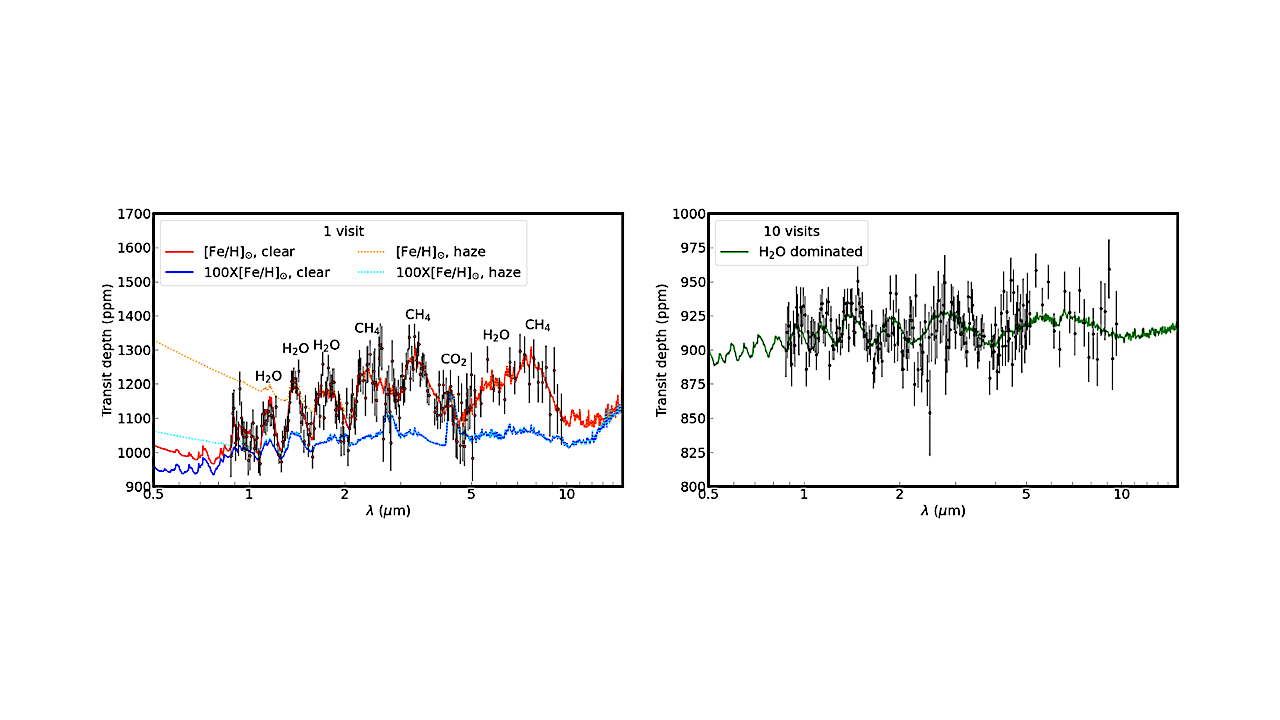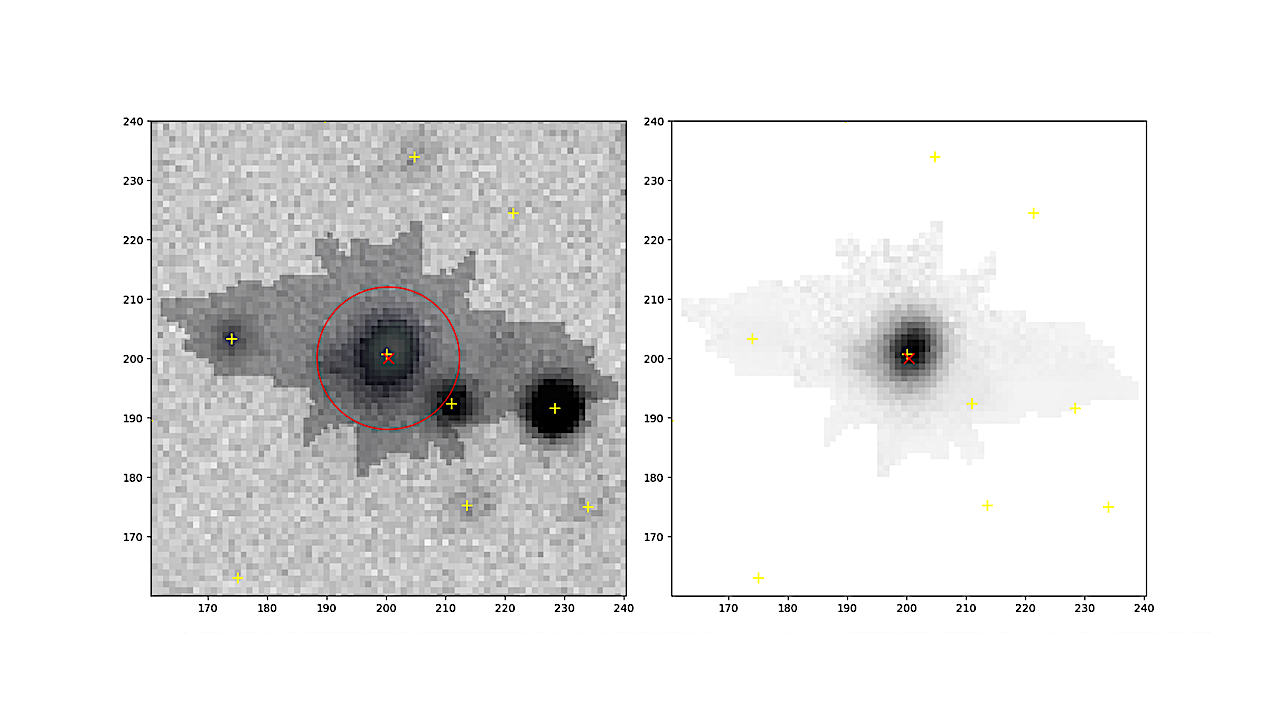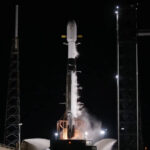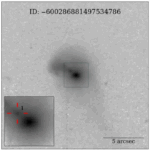Now Reading: The SPACE Program I: The Featureless Spectrum Of HD 86226 c Challenges Sub-Neptune Atmosphere Trends
-
01
The SPACE Program I: The Featureless Spectrum Of HD 86226 c Challenges Sub-Neptune Atmosphere Trends
The SPACE Program I: The Featureless Spectrum Of HD 86226 c Challenges Sub-Neptune Atmosphere Trends
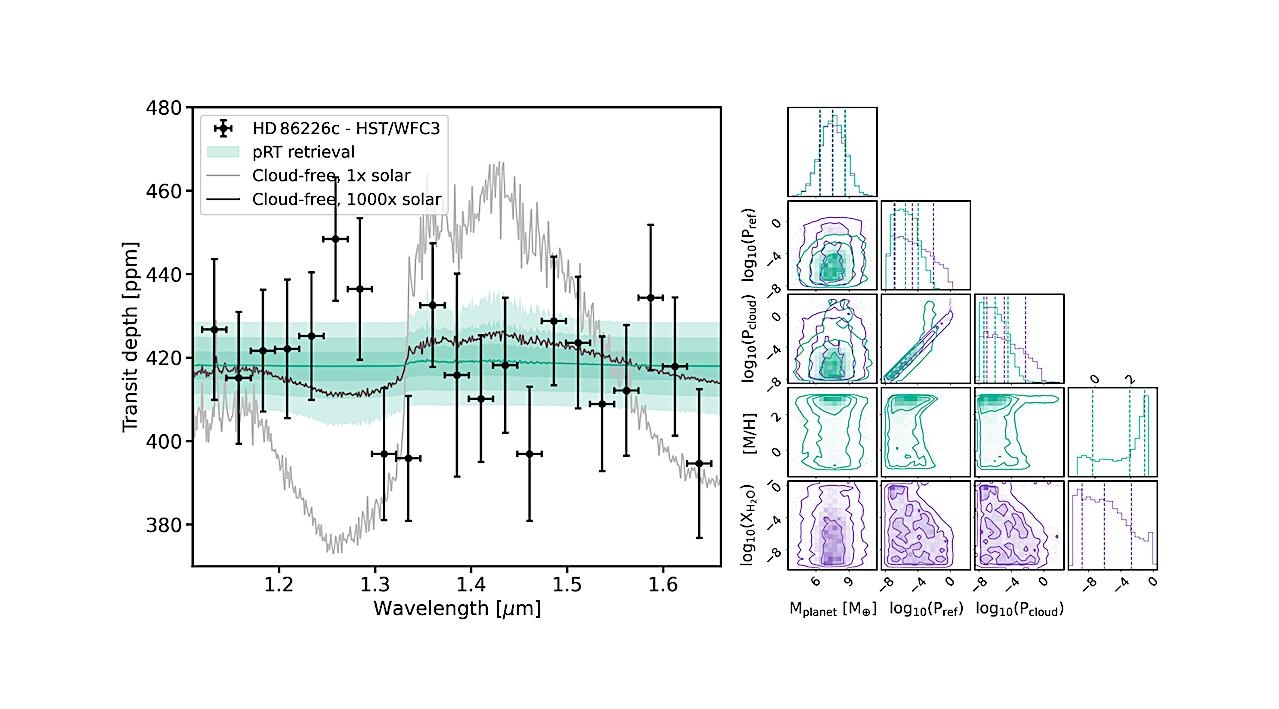

Results of the pRT retrievals for the atmosphere of HD 86226 c. Left: PACMAN spectrum (black data) and 1, 2, and 3σ percentiles of the spectra from the posteriors of the pRT retrieval with scaled solar chemistry (green shadings). The gray spectra show cloud-free models with 1× and 1000× solar metallicity. Right: Posterior distribution for the two retrieval runs with scaled solar chemistry (green) and H-He-H2O atmosphere (purple). The pressures are provided in units of log10([bar]). Contours are drawn at the 1, 2, and 3σ levels. Vertical dashed lines mark the 16%, 50%, and 84% quantiles. astro-ph.EP
Sub-Neptune exoplanets are the most abundant type of planet known today. As they do not have a Solar System counterpart, many open questions exist about their composition and formation.
Previous spectroscopic studies rule out aerosol-free hydrogen-helium-dominated atmospheres for many characterized sub-Neptunes but are inconclusive about their exact atmospheric compositions.
Here we characterize the hot (Teq=1311K) sub-Neptune HD 86226 c, which orbits its G-type host star. Its high equilibrium temperature prohibits methane-based haze formation, increasing the chances for a clear atmosphere on this planet. We use HST data taken with WFC3 and STIS from the Sub-neptune Planetary Atmosphere Characterization Experiment (SPACE) Program to perform near-infrared 1.1-1.7micrometer transmission spectroscopy and UV characterization of the host star.
We report a featureless transmission spectrum that is consistent within 0.4 sigma with a constant transit depth of 418+-14ppm. The amplitude of this spectrum is only 0.01 scale heights for a H/He-dominated atmosphere, excluding a cloud-free solar-metallicity atmosphere on HD 86226 c with a confidence of 6.5 sigma.
Based on an atmospheric retrieval analysis and forward models of cloud and haze formation, we find that the featureless spectrum could be due to a metal enrichment [M/H] above 2.3 (3 sigma confidence lower limit) of a cloudless atmosphere, or silicate (MgSiO3), iron (Fe), or manganese sulfide (MnS) clouds. For these species, we perform an investigation of cloud formation in high-metallicity, high-temperature atmospheres.
Our results highlight that HD 86226c does not follow the aerosol trend of sub-Neptunes found by previous studies. Follow-up observations with the JWST could determine whether this planet aligns with the recent detections of metal-enriched atmospheres or if it harbors a cloud species otherwise atypical for sub-Neptunes.
K. Angelique Kahle (1 and 2), Jasmina Blecic (3 and 4), Reza Ashtari (5), Laura Kreidberg (1), Yui Kawashima (6), Patricio E. Cubillos (7 and 8), Drake Deming (9), James S. Jenkins (10 and 11), Paul Mollière (1), Seth Redfield (12), Qiushi Chris Tian (12 and 13), Jose I. Vines (14), David J. Wilson (15), Lorena Acuña (1), Bertram Bitsch (16), Jonathan Brande (17), Kevin France (15), Kevin B. Stevenson (5), Ian J.M. Crossfield (17 and 1), Tansu Daylan (18 and 19), Ian Dobbs-Dixon (3 and 4), Thomas M. Evans-Soma (20), Cyril Gapp (1 and 2), Antonio García Muñoz (21), Kevin Heng (22 and 23 and 24), Renyu Hu (25 and 26), Evgenya L. Shkolnik (27), Keivan G. Stassun (28), Johanna Teske (29 and 30) ((1) Max Planck Institute for Astronomy, (2) Department of Physics and Astronomy, Heidelberg University, (3) Department of Physics, New York University Abu Dhabi, (4) Center for Astrophysics and Space Science (CASS), New York University Abu Dhabi, (5) JHU Applied Physics Laboratory, (6) Department of Astronomy, Graduate School of Science, Kyoto University, (7) Space Research Institute, Austrian Academy of Sciences, (8) INAF, Osservatorio Astrofisico di Torino, (9) University of Maryland: College Park, (10) Instituto de Estudios Astrofísicos, Facultad de Ingeniería y Ciencias, Universidad Diego Portales, (11) Centro de Astrofísica y Tecnologías Afines (CATA), (12) Astronomy Department and Van Vleck Observatory, Wesleyan University, (13) Department of Physics and Astronomy, The Johns Hopkins University, (14) Instituto de Astronomía, Universidad Católica del Norte, (15) Laboratory for Atmospheric and Space Physics, University of Colorado, (16) Department of Physics, University College Cork, (17) Department of Physics and Astronomy, University of Kansas, (18) Department of Physics, Washington University, (19) McDonnell Center for the Space Sciences, Washington University, (20) School of Information and Physical Sciences, University of Newcastle, (21) Université Paris-Saclay, Université Paris Cité, (22) Faculty of Physics, Ludwig Maximilian University, (23) Department of Physics & Astronomy, University College London, (24) Department of Physics, University of Warwick, (25) Jet Propulsion Laboratory, California Institute of Technology, (26) Division of Geological and Planetary Sciences, California Institute of Technology, (27) School of Earth and Space Exploration, Arizona State University, (28) Department of Physics & Astronomy, Vanderbilt University, (29) Earth and Planets Laboratory, Carnegie Institution for Science, (30) Observatories, Carnegie Institution for Science)
Comments: Accepted for publication in Astronomy & Astrophysics
Subjects: Earth and Planetary Astrophysics (astro-ph.EP)
Cite as: arXiv:2507.13439 [astro-ph.EP] (or arXiv:2507.13439v1 [astro-ph.EP] for this version)
https://doi.org/10.48550/arXiv.2507.13439
Focus to learn more
Submission history
From: Kim Angelique Kahle
[v1] Thu, 17 Jul 2025 18:00:01 UTC (7,291 KB)
https://arxiv.org/abs/2507.13439
Astrobiology,
Stay Informed With the Latest & Most Important News
-
 012024 in Review: Highlights from NASA in Silicon Valley
012024 in Review: Highlights from NASA in Silicon Valley -
 02Panasonic Leica Summilux DG 15mm f/1.7 ASPH review
02Panasonic Leica Summilux DG 15mm f/1.7 ASPH review -
 03How New NASA, India Earth Satellite NISAR Will See Earth
03How New NASA, India Earth Satellite NISAR Will See Earth -
 04And Thus Begins A New Year For Life On Earth
04And Thus Begins A New Year For Life On Earth -
 05Astronomy Activation Ambassadors: A New Era
05Astronomy Activation Ambassadors: A New Era -
06SpaceX launch surge helps set new global launch record in 2024
-
 07Space Force plans new ‘Futures Command’ amid pressure to speed up modernization
07Space Force plans new ‘Futures Command’ amid pressure to speed up modernization













